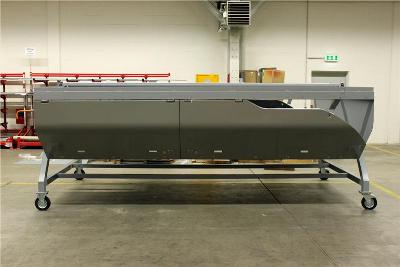A new polyurethane-based sandwich material has been developed by researchers to build lightweight trains.
 Building lightweight trains using new polyurethane-based sandwich material
Building lightweight trains using new polyurethane-based sandwich material
The use of the sandwich material makes the components more than 35% lighter than aluminum- or steel-made components and also minimizes the costs by 30%. The material is ideal for various applications, including diesel engine housings.
Manufacturers are looking for lighter materials as a replacement for steel and aluminum to make trains and cars more economical. Hence, Fraunhofer Institute for Chemical Technology (ICT) has collaborated with the Karlsruhe Institute for Technology, the University of Stuttgart, the DLR’s Institute for Vehicle Concepts, DECS, Bayer MaterialScience, KraussMaffei Kunststofftechnik and Bombardier to meet their need for lighter materials.
The team decided to construct a sandwich structure to ensure stability of components. The structure includes outer layers made of glass fiber reinforced polyurethane materials, and the inner part made of paper honeycomb. Polyurethane, a bulk plastic and known as customizable material, can be used to meet various requirements. It is available in compact and foamed forms. This material is hard and strong in compact form, and soft in foamed form.
Fraunhofer’s team started modifying the polyurethane material by using various additives to meet the fire safety standards for railway vehicles. Then, the researchers focused on optimization of fiber spraying process to enable production of complex components in all sizes. A problem associated with the fiber spraying process is that measurement of the accurate thickness of the top polyurethane layers proved impossible. However, scientists have identified a solution for this. The layers can be examined using computer tomography, which is followed by application of an evaluation process to determine the exact thickness of the layers. They developed a diesel engine housing to demonstrate the capability of the sandwich material. The housing is over 2 m wide and about 4.5 m long and has passed the first strength test. In the test, the housing was placed in a rig and then forces were applied at different locations to measure the deformation rate.